 Featuring one of the most nihilistic characters in Seijun Suzuki's film canon, which is saying something, Smashing The O-Line tells the story of two investigative reporters and old friends, Katiri & Nishina, each of which with very different moral obligations. While Nishina makes sure his desire for a scoop stays within the moral and ethical boundaries, Katiro is so ambitiously amoral that he'll sell out anyone to get a schoop. The two men are after the same story, focusing on the ever-growing drug trade which is making its way from Hong Kong to the Japanese shores, and much of Smashing the O-Line's early half plays out much like a cat-and-mouse game, with both Katiri & Nishina surveying the same space, using their divergent methods to track down the smugglers responsible for the growing drug problems in Japan. Katiri any means necessary' approach eventually catches up to him, as he gets too close to the source of the drugs, which leads a ruthless female gang boss to kidnap his sister as a form of collateral. Like that, Katiri disappears without a trace, leading Nishina to use his morally-just methods to track down Kaitiri and attempt to break the story about the large drug smuggling operation in the process. Seijun Suzuki's Smashing The O-line is a film about journalistic ethics and morality, telling a dark, seedy story about drug smuggling that finds the lines between police-work and investigative journalism endlessly blurred. At times, while watching Smashing The O-line I found myself forgetting that these characters were reporters and not police officers, as the film holds the work of these types of reporters in high regards. One of the filmmakers darker urban films, Smashing The O-line is a story of drug smuggling and human trafficking that shows little restraint, for the time period, in exhibiting the type of filth and depravity that exists in this world. For example, the film isn't particularly modest in the sequence involving the kidnapping of Katiri's sister, as this female mob boss makes sure to tell Katiri that she fully intends to let her cronies gang-rape his sister, a quite salacious, borderline startling sequence for the time period. Typical of his films, Smashing The O-Line uses kinetic, quick-twitch editing, at times, and tight compositions to give the film an added layer of intensity and flair, with Suzuki creating a film that feels tense and action-packed even with little actual action ever on screen. For me, Smashing The O-Line is one of Suzuki's more interesting early works due to Katiri's amoral ambition and narcissism, a character which almost feels like a stepping stone for Suzuki's later efforts such as Branded to Kill. Katiri is a character who is so oblivious to everything outside of himself and his own accomplishments that even at the end of the film, when he is rescued from the drug smugglers, he attempts to make a deal with the same woman who earlier in the film threatened to have his own sister gang-raped. The final scene of this film perfectly encapsulates Katiri as a character, as he leaves the crime scene after being rescued by Nishina with a badly injured ankle, refusing medical attention. Katiri's own arrogance, bullheadedness is prevalent, as he calls the injury only a fleshwound, yet as he walks down the street, Suzuki's camera captures the increasing pain and difficulty Katiri is having in order to continue to walk. The sequence is a simple, yet brilliant device, exhibiting, how Katiri hasn't learned a thing about the dangers of his methods while simultaneously hinting that it will eventually catch up to him with a more tragic end result.
0 Comments
 Seijun Suzuki's The Sleeping Beast Within is a cynical, noir-flavored, detective story that plays somewhat like a greek tragedy. The film tells the story of an older businessman who has just returned to his family after an extended overseas business trip. His first night home, the businessman mysteriously vanishes, which leads to his daughter hiring a young, hotshot reporter to attempt to track down her father. When their initial investigation surrounding the events of his disappearance yield little results, the daughter is devastated, only to discover her father has reappeared at their home that night. Something seems off about him though, which prompts the reporter to dig deeper, uncovering a secret world of heroin smuggling and murder - with the father being wrapped up in a deadly game. Seijun Suzuki's The Sleeping Beast Within is a film about the evil or inhumanity in every single one of us, a story that argues all of us are capable, it just takes the right (or wrong) set of circumstances to push us over the edge. From the very beginning of The Sleeping Beast Within, Seijun Suzuki sets out to establish how noble of a character this businessman/father is, a man who spent many years working hard to provide for his daughter and wife. As the film progresses, the viewer, much like the daughter character in the film, slowly begins to learn that this man is now a part of a major drug trade, with the reasoning for the criminal behavior being quite interesting. Working for decades at a modest, respectable job, the father is a character who worked hard but for what? As his impending retirement has left him in a place of depression, fearful that his wife and daughter won't be taken care of financially. He has resentment for the world around him, not feeling appreciated, and in falling into the world of drug smuggling this man gets a taste of the rush associated of not having to live by the rules of the law anymore, making the quick buck, and the tasting power and money it can bring to him and his family. The Sleeping Beast Within is cynical in that it captures the unfairness in life, showing how this good-natured, noble man finds himself seduced to a lifestyle with a lower form of morality, due to the much more substantial rewards it offers. The daughter's realization of her father's deteriorated morality is truly the emotional core of the movie, setting up a tragedy-style ending which finds the daughter attempting to save her father, leading the man to understand the error of his ways. While far from the bombastic action films many know Seijun Suzuki for, The Sleeping Beast Within plays much like a brooding detective story, with the investigative reporter being the driving force behind discovering the truth behind the father/businessman's disappearance. Seijun Suzuki's direction is always unique, and this film is no exception, with my favorite stylistic decision in this film being the use of flashback. There are two major flashback sequences in The Sleeping Beast Within, each of which are being told by a character onscreen. While many flashbacks simply count on a slow transitional fade to inform the viewer, Suzuki opts instead to overlay the character telling the story with the flashback sequence itself, superimposing them over the action which they are describing, a unique decision which I'd argue amplifys the flashback due to capturing both the current, the person telling the story in real-time, and the events of the past. Another great example of Suzuki's ability to elevate his material through direction is a sequence early on in the film. The daughter is out looking for her father, and while having a conversation with a man she learns that her father didn't get a job he told her he did. The sequence is a simple composition, with the man on one side of the frame and the daughter on the other, but Suzuki has the daughter's image obstructed and blurred by plated glass, an interesting decision that visually evokes the sense of puzzlement felt by this woman, who for first time learns of the deceit her father is capable of. Featuring a tragic conclusion and a story that reminds the audience that all men are capable of evil, Seijun Suzuki's The Sleeping Beast Within isn't exactly an uplifting story, but the emotional core centered around the relationship between father and daughter makes the film worth seeing alone.  John Hillcoat's Triple 9 takes place on the mean streets of Atlanta, where a group of highly skilled thieves have just committed a successful heist for the Russian mob. The crew is a hodgepodge of ex-military and crooked cops, each of which has grown desensitized to morality, only looking out for themselves in this cruel environment which they inhabit. They think they are done, but when the Russian mob blackmails them into executing another even more complicated heist, the team decides that a manufactured 999, police code for "officer down" is the only way to create a big enough distraction away from the heist. The plan? Have one of their partners, an unsuspecting rookie, murdered by a gang member as a distraction, but unfortunately for this team of crooked cops, their unsuspecting rookie is more crafty than he appears. Triple Nine is the type of crime drama you've seen before, a tale of corrupted allegiances, double-crosses, gunplay, and cops and robbers which lives up to the age old adage that their is no honor among thieves. Featuring a loaded cast of quality actors, Triple 9 has its moments, but unfortunately the script is never capable of fully developing its characters, delivering a film with a few cool action set pieces and double-crosses but not much else. The main problem with Triple Nine is it never manages to create much pathos around its hardended characters, all of which are deeply flawed individuals. The film wants to capture the toll of this lifestyle on both the antagonists and protagonists of the story that in effect blurs the line between good and evil yet it never spends the time necessary to get into the psyche of its characters to effectively do so. We are told not shown how the lifestyle of these characters has led to a deteriorating sense of morality, how a cruel environment breeds this selfish, me, myself, and I mentality in these men. The problem isnt that these characters arent likeable, it's that they are uninteresting, with no real depth outside of what is stated. John Hillcoat's direction is solid, effectively shooting exciting action sequences and building tension. One of my favorite decisions is the use of the color red throughout the film, an eery reminder of the impending death and violence circling all these characters. While there are certainly aspects to like, Triple Nine is another rather disappointing American effort by the Australian filmmaker. Triple Nine is the type of film that isn't bad per se but just forgettable, a film that never differentiates itself from similar films of the genre, ending up feeling like a major missed opportunity when considering all the talent involved. 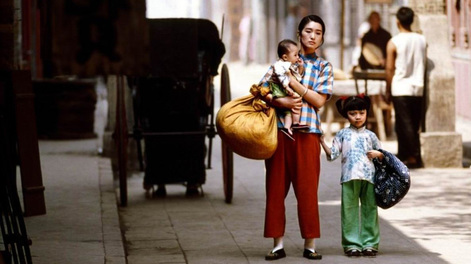 Spanning over three decades, Yimou Zhang's To Live is an epic story of one Chinese family living through years of significant political change in China, following them as they go from landowners to peasants, as they suffer personal tragedy, while capturing how they manage to never lose hope or optimism in what the future may hold. Beginning in the 1940s, To Live introduces us to Fugui, a compulsive gambler, who loses his families' home to a gambling debt. With the perspective that he choose gambling over his family, Fugui's wife Jiazhen leaves him over his latest snafu, taking their young daughter and unborn son with her. After losing everything, Fugui finds himself pressed into joining both the nationalist and eventually the communist armies in the following years, and after being surrounded by death and carnage he begins to see the true error of his past ways. Reconnecting with Jiazhen, who is now conducting menial work for the recently Communized town, To Live documents their struggles in raising a family and surviving in such turbulent times. Yimou Zhang's latest film is a gripping family drama that could best be described as an ode to the Chinese people who lived through the time period. The film doesn't hold back any punches in revealing the us vs. them mentality of political ideology, revealing the destruction and death such large political changes had on the masses in China, many of which were peasants simply trying to persevere through the large seas of change. In this sense, To Live shows a ton of admiration for these brave and strong individuals who survived under a totalitarian regime, exhibiting how many individuals had their fates and fortunes determined by forces much beyond their control. Even with all the harsh circumstances these characters' face, To Life manages to keep an aura of optimism, placing value on living, regardless of the less than ideal circumstances which these characters face. Make no mistake, this film is full of sadness and tragedy, but the way Yimou Zhang's film exhibits the importance of perseverance and optimism is what truly stands out. A quietly seething commentary on Communism, Yimou Zhang's To Live at its core is a film celebrating the Chinese people, using this story of one families perseverance to praise the Chinese masses as a whole, capturing how often the seas of change are much bigger than any one individual while capturing how it is up to us to make the best of any situation.  Perry Blackshear's They Look Like People is a quietly brilliant film which uses psychological horror to deliver a resonant portrait of loneliness, depression, and self-defeat. The film is centered around Wyatt and Christian, two old friends who haven't seen each other in years. Christian is a character who has seemingly put his fragility and low self esteem behind him, hitting the gym and listening to self-help books as a way to build self confidence. One day while walking home from work he runs into Wyatt, who looks a little disheveled. Having recently broken up with his longtime girlfriend, Wyatt has seen better days, and Christian invites him to crash at his old place for a few days so they can reconnect. While the two reminisce about old times, Wyatt keeps a secret from his old friend, retreating to the basement every night to prepare for "evil" which is coming. You see, Wyatt suspects that everyone around him is slowly turning into evil creatures, and with the impending war looming, he struggles to share the news with Christian. Told mostly from the point of view of Wyatt, They Look Like People is a psychological horror film that never reveals it's true intentions til the final frame, forcing the viewer to question Wyatt's perceptions about this evil presence. The story paints a portrait of two old friends who have each struggled in their lives with self doubt and depression, and the juxtaposition of Christian, who is attempting to find happiness through a new potential coworker, and Wyatt, a character in who has this me against the world mentality due to be caught in the deep throngs of loneliness is interesting. For me, what makes They Look Like People so effective is how this war Wyatt finds himself in is a symbolic representation of the emotions felt by someone who struggles with loneliness. Wyatt is a character who believes that this evil is all around him and can infest anyone at anytime, which in turn leads him to be secretive, somewhat paranoid, and emotionally isolated. This mentality perfectly evokes how an individual often feels when seeing a long-term relationship end, as the film uses these psychological horror tropes to evoke the emotional isolation and loneliness being felt by Wyatt's character, who struggles to gain his footing after losing his long-time partner. They Look Like People is also very effective when it comes to horror, being a film that does a whole lot with very little, understanding that less is more when it comes to creating brooding atmosphere and tension. Whether it is playing with focus, using handheld or still photography,or expressive lighting and compositions, during the film's more intense moments The Look Like People delivers its fair amount of bone-chilling moments. While the horror is very well done, They Look Like People stood out to me because of its strong characterizations, examine two individuals who have dealt with their self-doubt in different ways. Through this story, the film captures the importance of some form of companionship, whether it be friendship or a romantic relationship, using this creepy psychological horror story to exhibit a surprisingly resonant story of self-esteem and emotional perseverance. Funnier than one would expect too, Perry Blackshear's They Look Like People is a thinking man's horror film that works so well due to its ambiguous nature, being a film that provides chills, and laughts, but most importantly a surprisingly powerful examination of loneliness and self-doubt  Andrzej Zulawski's debut feature, The Third Part of The Night, is a mind-bending, startling drama about a young man who witnesses the death of his wife and son at the hands of the Gestapo, narrowly escaping the massacre himself. Devastated, the young man lives on the run, attempting to join the resistance while narrowly evading capture at nearly every turn. Taking refuge in the home of a pregnant young woman who eerily looks like his deceased wife, the young man grows intimate with this woman, helping her bare her child. Andrzej Zulawski's The Third Part of The Night is a dark, somber film which is a truly a harrowing portrait of Poland during WWII. Aesthetically speaking, The Third Part of the Night features a very grimy, dirty aesthetic, with Zulawski's trademark cinematography being prevalent, albeit somewhat restrained compared to some of his other films. Structurally, The Third Part of The Night is very disorienting, ambiguous, and challenging, as early on I found myself wondering if this other woman was even real, or just a figment of a tortured souls' imagination. This disorientation leads to terror and a sense of hopelessness that hangs over the entire film, with The Third Part of Night effectively capturing the traumatic circumstances and grief facing this character. The Third Part of The Night is not overly violent but when it does come, it's brutally realistic, with Zulawski not holding back or shying away from showing the torment and violence these characters go through and/or the pain they feel, showing this anguish in a very genuine feeling way. Rather typical of many of his film canon, to say I completely understood everything Zulawski was going for would be grossly overstating on my part, but I think a lot of it is just his overall cynicism towards our society, the fragility of it all, and showing this bleak, dark nightmare that was the Nazi occupation. Our main protagonist is clearly a man who cannot seem to let go of his wife and the grief that comes with that haunts him through this fragmented nightmarish wasteland.  Ben & Chris Blaine's Nina Forever is a horror comedy hybrid which only sometimes works, but at its best, the film does provide a thinly-veiled allegory about the toxic nature of depression, loss, and emotional pain. The film tells the story of Holly, a young paramedic-in-training, who works a dead end job in a supermarket. This is where she meets Rob, a lost and angry young man, who hasn't been able to get his life back together since the dead of his girlfriend Nina in a car crash, wallowing in grief along with Nina's parents. Nina is drawn to Rob's apathy for life, and the two begin to see one and other, with Nina providing some semblance of a release for Rob. Things seem to be going well, that is until the couple goes to bed together, where Nina reemerges. Unable to rest in the afterlife, Nina, a tangled mess of blood & flesh, is still angry, chastising Rob for moving on from her while making life a living hell for Holly. With Holly determined to help heal Rob's proverbial wounds, Nina Forever provides one of the strangest love triangle relationships ever committed to celluloid, as Holly attempts to be with Rob while appeasing his ex-dead-girlfriend. Nina Forever is a film that I would describe as not quite funny enough to work as a comedy, nor thrilling or grotesque enough to work as a horror film, but what Ben & Chris Blaine have created is no doubt an oddly compelling film about the destructive nature of grief. Nina Forever is surprisingly insightful when it comes to issues of loss, exhibiting the stagnation it causes in everyone effected. Rob's relationship with Nina's parents is a great example of this, how these characters enable each other to remain stuck-in-a-rut, finding solace in each other pains in a way that never helps them move forward and eventually free themselves from despair. Personally I like to think of Nina's undead character as simply a manifestation of grief, loss, and pessimism, a physical representation of the baggage which Rob, and eventually Nina is burdened with carrying. Nina is a major obstacle in Holly and Rob's budding relationship, a symbolic representation of his baggie, i.e. grief, but towards the end of the film, after Rob and Holly find themselves separated, Nina finds herself now attached to Holly. While a little confusing, Nina now represents the baggage which Holly now carries from the failed relationship with Rob, though I may be reading into this much. While Ben & Chris Blaine's Nina Forever does show some of the warts of any first-time filmmaking, which in this case include an ill-advised, overuse of text messages that grow tiresome quickly, this is an oddly original and resonant story about grief and emotional baggage that suggest irst-time feature filmmakers Ben & Chris Blaine may have an interesting career ahead of them.  Based on a true story, Jan Troell's Everlasting Moments is an impressive drama about one woman's perseverance through life, managing to be a film that balances its high-octane drama with its more quiet meditative moments. The film is based on Maria Larsson, a Finnish mother and housewife, who devotes all of her well-being to her family, throwing her own personal sense of fulfillment by the way side in an attempt to care for her family. Her husband, Sigge, a drunkard, sometimes abusive, womanizing man in no way, shape, or form, deserves Maria's affection but she pushes through this destructive relationship due mainly to the sanctity of marriage instilled in her by her devout father. When changing times lead to the family's economic circumstances growing more and more dire, a glimmer of hope is offered to Maria in the form of a a camera won in a local lottery. While Maria initially tries to pawn off the camera, the store owner Sebastian convinces her to keep it, teaching her to use it, which in turn leads Maria down a path of personal fulfillment as she begins to grow a bit of reputation around town for her gorgeous, instinctive artistic ability as a photographer. Jan Troell's Everlasting Moments is very personal story told on a grand stage, a film that documents nearly 20 years in the life of Maria and her family, using their story to deliver subtextual examinations on class, religion, gender roles, artistic fulfillment and expression. Through Maria's story, Everlasting Moments is a subtle, and at times, not-so-subtle celebration of art and photography, capturing artistic expression's ability to instill emotion and purpose in a person, as well the importance of photography as simply a means to objectively document history. Photography instills Maria with a sense of purpose outside of maternal dedication, with the photos she creates giving her a sense of accomplishment and empowerment, a sense of individuality that keeps her from feeling simply like a second-class citizen, or worse parent, to the brutish Sigge. Everlasting Moments does a great job at capturing the wonder and unpredictability of life throughout its story, with Maria and her family being faced with major changes such as harsh economic downturns, and the first World War. The film captures how little control these characters have over their surroundings, in essence being a film that praises the sacrifice of Maria as a character, a woman who cares very much for her family but also struggles with defining herself as a person. Maria is a character who essentially feels imprisoned in her own home, due to the crudeness of woman's rights at the time, as well as her own god-fearing beliefs centered around the sanctity of marriage. She simply can't leave Sigge, as much as she may want too, and perhaps one of the Everlasting Moments most important aspects is how it captures the lack of control Maria had in her home simply due to being a woman and not a man. Everlasting Moments is a beautiful film to look at as well, featuring a warm, sepia-toned type of aesthetic which evokes a sense of hope throughout its running time. Sunlight is a major presence throughout the film as well, often overexposed and overpowering in the frame, as if Troell is commenting on Maria's unwavering devotion to her family and her sense of hope regardless of the dark circumstances that surround her. Ultimately an uplifting story of one woman's sacrifices made for her family, Jan Troell's Everlasting Moments never falls too harshly into sentimentality, being a powerful film about the importance of personal fulfillment and empowerment, while touching on interesting subtext centered around gender, class, and religion.  Made over thirty years ago, Lizzie Borden's Born In Flames is an angry and inventive piece of filmmaking that still retains its sense of urgency and immediacy today. Taking place ten years in the future, directly after the United States saw a peaceful revolution in which a socialist regime gained power, Born in Flames paints a portrait of a dystopia society where progressive groups such as minorities, LGBT organizations, and feminist groups, fight for their equal rights, still feeling left behind by their government, like second-class citizens to the majority. Struggling to find their fair slice of the pie, a group of woman decide to organize and mobilize their efforts, starting a new revolution in an attempt to rectify the continued violence against woman and unfair employment practices that still unfairly effect those of different gender and race. Born In Flames is energetic expose into activism, with much of the film consisting of realistic discussions between various factions of the radical feminist movement. There is the "Women's Army", who believe violence is the only way for women to gain their equal rights, there is two pirate radio stations who voice their disdain for injustice, and lastly there are three, white, intellectual type woman who work for the largest, socialist newspaper, whom believe these extreme feminist factions are in part, tearing the overall movement apart due to their extremist methods. Born In Flames uses staged news reports, surveillance footage, and documentary sequences to create a kaleidoscope of activism, being a film soaked in a ideologically complex discussion about progress in general and the fight for equality for minority groups. While there have been a few other films that focus on similar subject matters, Born in Flames captures the division and debate within activism like none i've ever seen before, reminding the viewer that no social movement is ever as clear and direct as it should be. The film exposes how various opinions about how to create change can in effect slow down progress, with some of these various factions conflicting with each other about simply how to achieve their equality. The film also has something to say about legalism, making a strong point that just because something is stated as law does not mean it has in-fact sparked change. While this revolution certainly was a move in the right direction of equal rights, Born in Flames argues that these type of changes don't happen over night, as the systematic stench of inequality lasts far beyond the official moment the law changes. While classified as a science-fiction film by some, Born in Flames is extremely prudent even to this day, with its examination of how media influences the masses being another important commentary on the state of America. In Born in Flames the mass media in effect stands up to the status quo of the system, routinely talking about how far America has come instead of trying to push it even further forward. Somewhere between essay film, political manifesto, and activism, Born in Flames is a film that doesn't deny that some progress has been made but it doesn't accept complacency either, being a creative examination of activism and progress.  A very unconventional horror/mystery/thriller hybrid, Daniel Peddle's Sunset Edge is the type of film that is sure to infuriate most filmgoers, being a meditative, slow-burning study of loss, time, and youth. The film features two dueling narratives, one involving a group of suburban teens who rummage through the decaying, abandoned homes of Sunset Edge, while the other focuses on Malachi, a lonely, socially-awkward teenager, who was adopted by his grandfather after a tragedy in Sunset Edge. The first segment of the film is very much in the vein of a Southern coming-of-age story, following these four disenchanted youth with great naturalism, as they kill time among the decaying mobile homes of Sunset Edge. The film captures the disenchantment of these characters as they talk, slowly revealing their growing realization that the world around them is much bigger than themselves. The other segment is a much more brooding and emotionally affecting, with Daniel Peddle really putting on a masterclass in how to tell a story through visual means. There is barely any dialogue throughout this entire segment, yet Peddle uses digital photography to perfection, constructing the tragic past of Malachi, examining the emotionally taxing journey his life has been up to this point, mostly due to a tragic past. I've always found it particularly fascinating when a documentary filmmaker goes the narrative route, and Sunset Edge is no exception, as Daniel Peddle shows an uncanny respect for setting in his narrative debut. The decaying mobile homes, barren landscape, and quietness of Sunset edge are a character onto itself, evoking this sense of deep-seeded tragedy, an area that has been forgotten, left behind, much like one of its main characters' Malachi, who carries much of the emotional weight of this story. Using only natural lighting, Sunset Edge reeks of authenticity, and the use of a free-flowing, oscillating camera gives the film a very Malick-ian vibe in stretches, encapsulating the environment in which these characters inhabit, the stale air and decay. The meaning of Sunset Edge is somewhat ambiguous, but what I really appreciated about the film is how its true horror aspect is completely based in reality, tapping into the psyche of the character of Malachi, expressing the true horror of loss and its association with impending loneliness and isolation, both emotionally and physically. One could argue that Sunset Edge is really a film about the privledge of youth, contrasting the aimless lifestyle of these four young teenagers with that of Malachi, a young man who has lived a more complicated life than anyone his age should ever have to. More unsettling than scary, Sunset Edge is perhaps the closest thing humanity will ever get to a Terrence Malick directed horror film, being an impressive, meditative study of emotional distress, decay and loss, which combines Gothic horror pastiche with coming-of-age naturalism. |
AuthorLove of all things cinema brought me here. Archives
June 2023
|








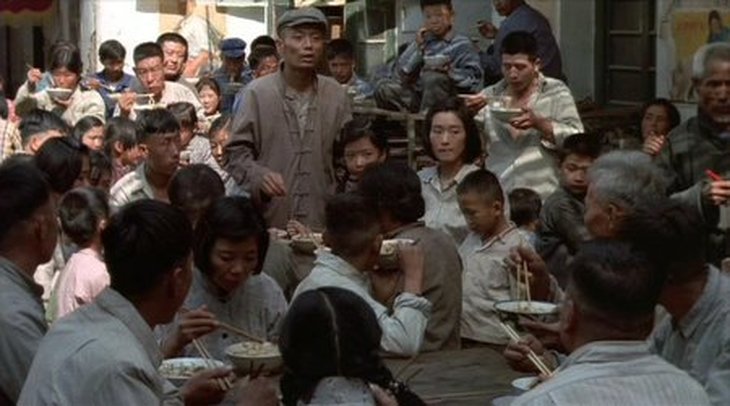
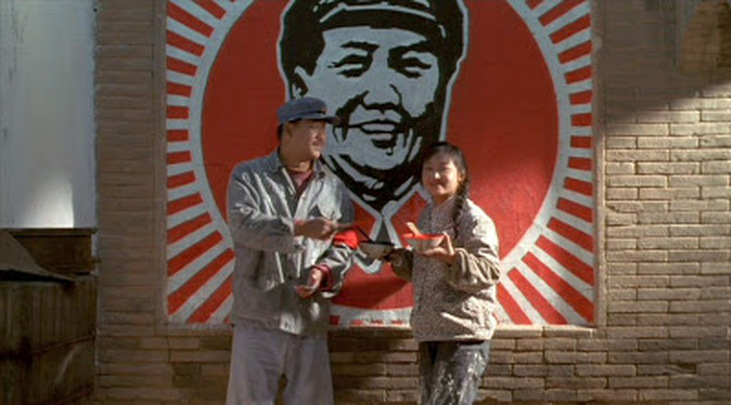

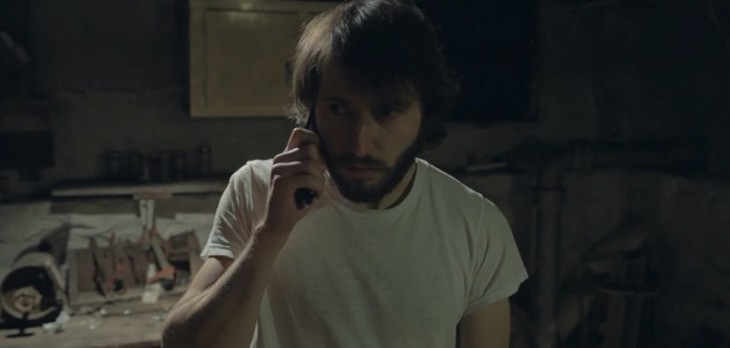














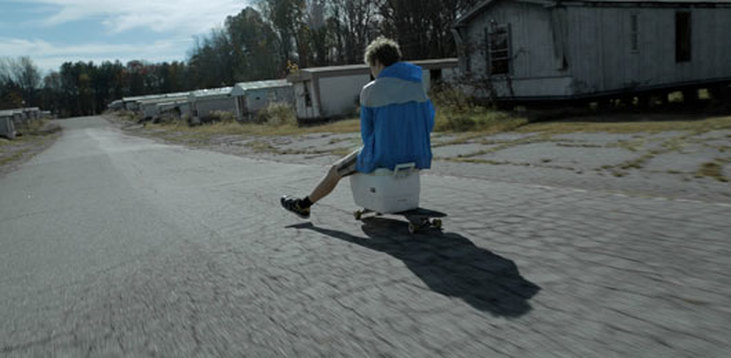
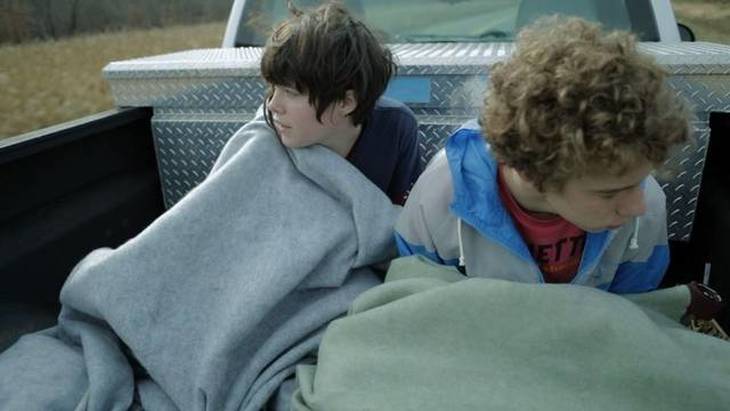
 RSS Feed
RSS Feed
